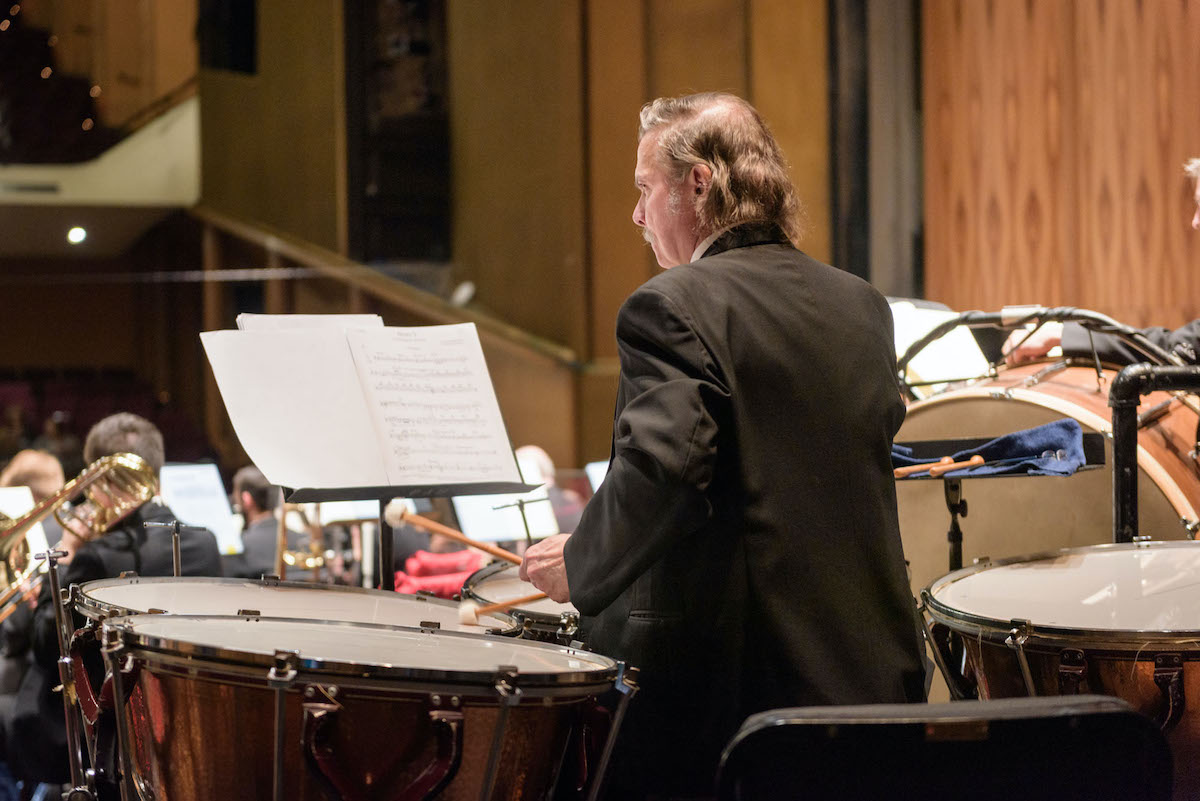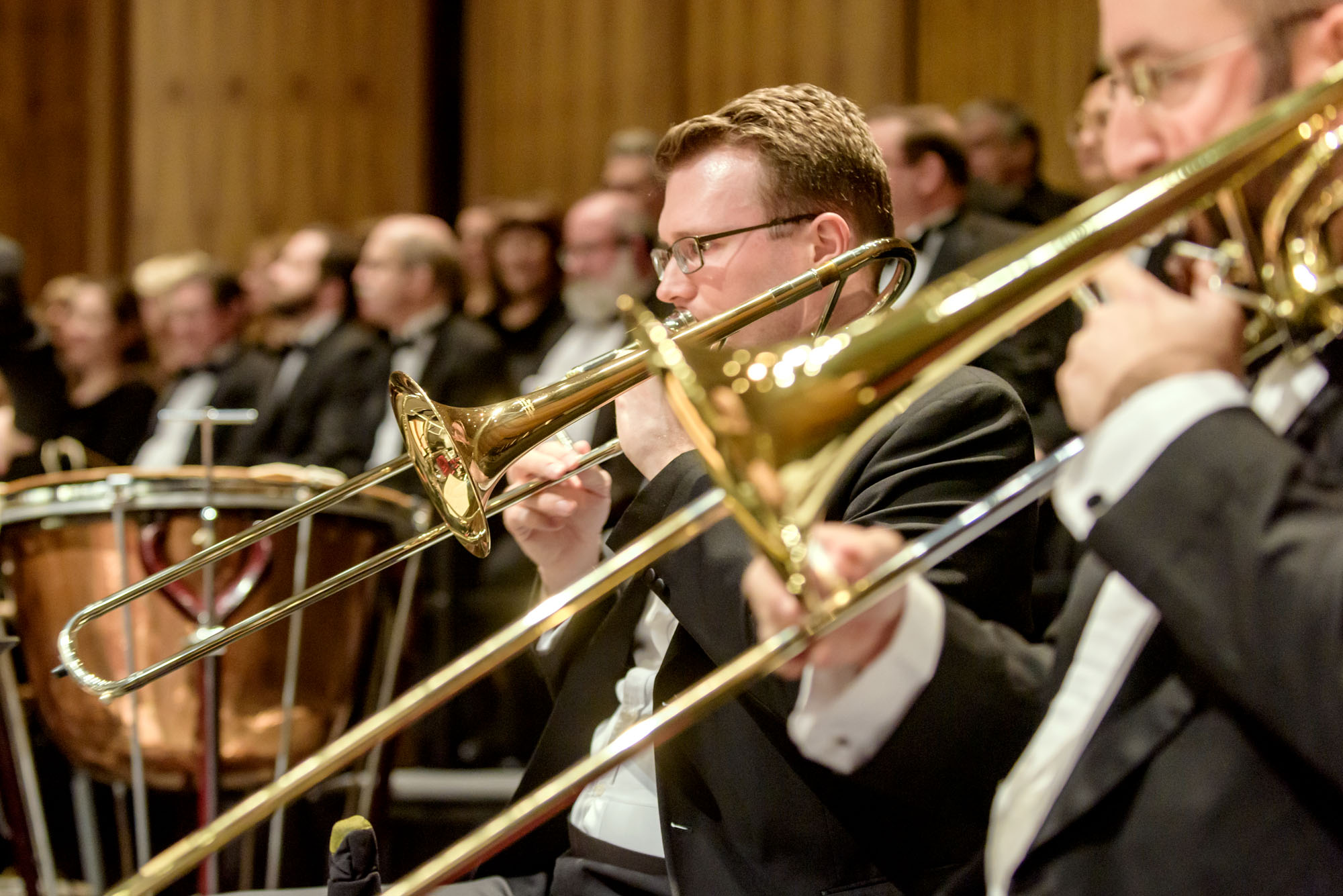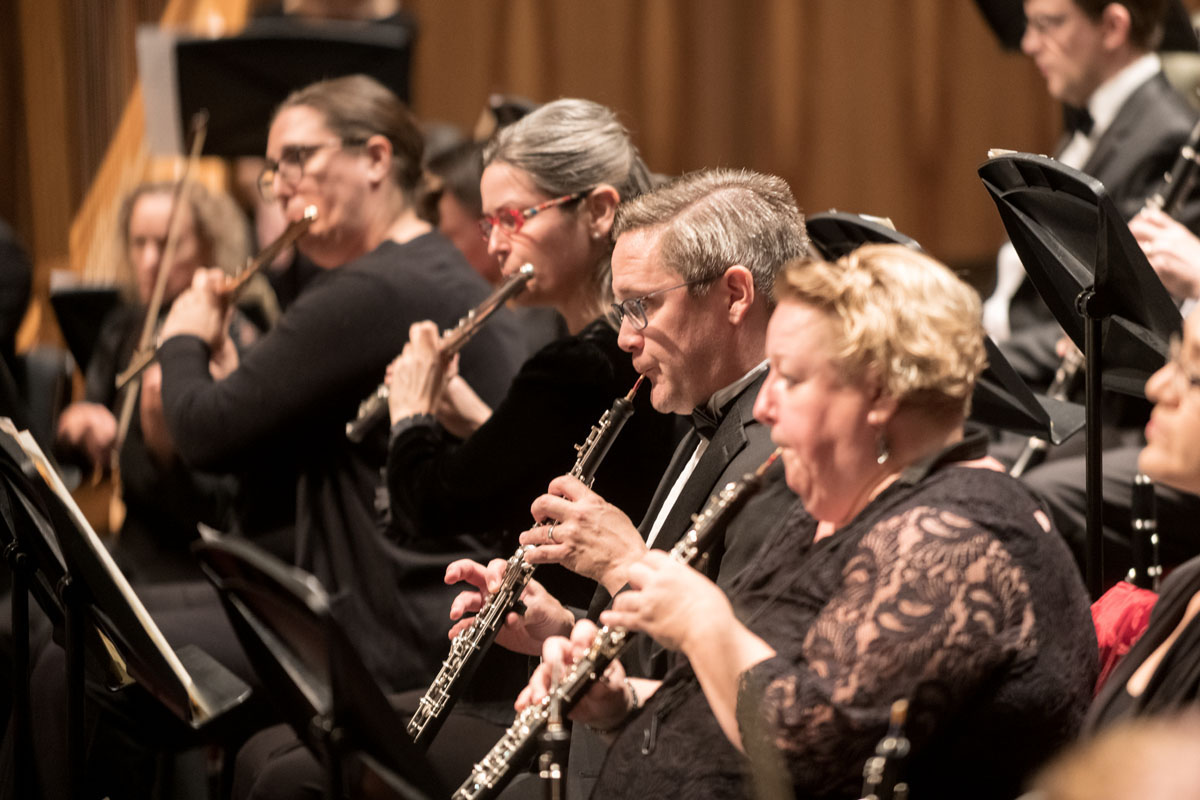Meet the Instruments
The Instruments of the Orchestra
Learn about the instruments that make up the Orchestra through these videos from the musicians of the Akron Symphony Orchestra.
Discover the Trumpet
Loren Toplitz has been a trumpet player with the Akron Symphony Orchestra for 20 years. In this video, he talks about the role the trumpet plays as a member of the orchestra’s brass family, which includes horns, trumpets, trombones and tuba.
The trumpet is the highest sounding member of the brass family. The brilliant tone of the trumpet travels through several feet of tubing into an oblong shape. The player presses the three valves in various combinations with the fingers of the right hand to obtain various pitches.
You may be familiar with some of the most famous pieces of classical music that feature the trumpet, such as Rossini’s William Tell Overture, Sibelius’ Karelia Suite, and Tchaikovsky’s Sleeping Beauty.
Discover the Violin
Kallen Bierly O’Connor has been a violin player with the Akron Symphony Orchestra since 2015. In this video, she talks about the role the violin plays as a member of the orchestra’s string family, which includes the violin, viola, cello, double bass and harp.
The violin is the soprano voice in the string family. It is made out of several pieces of wood that are glued together, and the body of violin is hollow, making it a resonating box for the sound. The instrument is held under the chin, resting on the shoulder. The violin has a lovely tone that can be soft and expressive or exciting and brilliant.
You may be familiar with some of the most famous pieces of classical music that feature the violin, such as Vivaldi’s The Four Seasons, Mozart’s The Marriage of Figaro, as well as the soundtracks to the Harry Potter movies.
Discover the Oboe
Terry Orcutt is the principal oboe with the Akron Symphony Orchestra. He has been a member of the orchestra since 2006. In this video, he talks about the role the oboe plays as a member of the orchestra’s woodwind family, which includes the flute, clarinet, bassoon, piccolo, English horn, bass clarinet and contrabassoon.
The oboe is similar to the clarinet in many ways. Both are made from wood and have metal keys that can produce many notes rapidly. Unlike the clarinet, the oboe does not have a mouthpiece but has two reeds tied together. By placing them between one’s lips and blowing air through them, the reeds vibrate and produce a sound.
Several famous composers wrote concertos for the oboe, including Bach, Mozart, Handel and Vivaldi.
Discover the Clarinet
Heidi Aufdenkamp Peck has been a clarinet player with the Akron Symphony Orchestra since 1994. In this video, she talks about the role the clarinet plays as a member of the orchestra’s woodwind family, which includes the flute, oboe, bassoon, piccolo, English horn, bass clarinet and contrabassoon.
Made from wood, the clarinet produces a fluid sound when air is blown between a single reed and the mouthpiece. By pressing metal keys with the fingers of both hands, the player has the ability to play many different notes very quickly.
Several famous composers wrote symphonies that include memorable parts for the clarinet, including Nikolai Rimsky-Korsakov, Ottorino Respighi, Felix Mendelssohn and Ludwig van Beethoven.
Discover the Double Bass
Brian Del Bianco has been a bass player with the Akron Symphony Orchestra since 2001. In this video, he talks about the role the double bass plays as a member of the orchestra’s string family, which includes violin, viola and cello. The sound of the string instruments is made when the player moves the bow over the strings of plucks the strings (called pizzicato).
The double bass, or string bass, is the largest and lowest instrument of the string family. The double bass has sloping shoulders, instead of rounded shoulders like the other string instruments. This allows the player to have more room to move his or her arms, hands, and fingers in front of the instrument. Because of its size, the player stands or sits on a high stool to play the double bass.
Some of the more well-known pieces of music that feature the double bass are Carnival of the Animals by French composer Camille Saint-Saëns, the fourth movement of Beethoven’s Symphony No. 9, and the third movement of Mahler’s Symphony No. 1.
Discover the Mallet Percussion
Rob Kistler is the principal percussionist with the Akron Symphony Orchestra. He has been a member of the orchestra since 2015. In this video, he talks about the roles the various instruments in the mallet percussion family play in the orchestra.
The percussion family is made up of instruments that make a sound by shaking or striking one object with another. Mallet percussion instruments include the marimba, xylophone, glockenspiel and vibraphone.
Discover the Viola
Caleb Cox is the principal viola player with the Akron Symphony Orchestra and has been with the orchestra since 2018. In this video, he talks about the role the viola plays as a member of the orchestra’s string family, which includes the violin, viola, cello, double bass and harp.
The viola is the alto voice in the string family. Like the violin, it is held under the chin, resting on the shoulder. Unlike the violin, the viola is slightly larger and is tuned five notes lower. It has a darker and warmer tone quality than the violin, but is not as brilliant.
Many famous composers played the viola, including Wolfgang Amadeus Mozart, Ludwig van Beethoven, Franz Schubert, Antonin Dvorák, Felix Mendelssohn, Benjamin Britten and Ralph Vaughan Williams.
Discover the Cello
Molly Jones has been a cello player with the Akron Symphony Orchestra since 2018. In this video, she talks about the role the cello plays as a member of the orchestra’s string family, which includes the violin, viola, cello, double bass and harp.
The cello is the tenor voice in the string family. While shaped like a violin, the cello is much larger and is held between the player’s knees. Because it can produce beautiful sounds from its lowest to its highest notes, it is a popular instrument.
You may be familiar with some of the most famous pieces of classical music that feature the cello, such as Saint-Saëns’ The Swan from Carnival of the Animals, Dvořák’s Cello Concerto in B minor, and Bach’s Cello Suite No. 1.
Discover the Flute
Jenny Robinson is a flute and piccolo player with the Akron Symphony Orchestra. She has been a member of the orchestra since 2015. In this video, she talks about the role the flute and piccolo play as members of the orchestra’s woodwind family, which includes the flute, clarinet, bassoon, piccolo, English horn, bass clarinet, contrabassoon and saxophone.
Originally made of wood, the flute is now made from silver or gold and is about 2 feet in length. It looks like a narrow tube with a row of holes covered by keys along one side. The player blows air across the small hole in the mouthpiece to produce a sound that can be either soft and mellow or high and piercing.
The piccolo is exactly like the flute except that it is much smaller and is usually made of silver or wood. The pitch of the piccolo is higher than that of a flute.
Discover the Trombone
Sean McGhee is the principal bass trombone player with the Akron Symphony Orchestra and has been with the Orchestra since 2009. In this video, he talks about the role the trombone plays as a member of the orchestra’s brass family, which includes horns, trumpets, trombones and the tuba.
The mouthpiece of the trombone is larger than that of a trumpet, and gives the instrument a more mellow sound. Instead of valves, the trombone has a slide that changes the length of its approximately 9 feet of tubing to reach different pitches.
Discover the Bassoon
Mark DeMio is a bassoon/contrabassoon player with the Akron Symphony Orchestra and has been with the Orchestra since 1983. In this video, he talks about the role the bassoon and contrabasson play as a member of the orchestra’s woodwind family, which includes flutes, oboes, clarinets, bassoons, piccolo, English horn, bass clarinet, and contrabassoon.
The bassoon is a large double reed instrument with a lower sound than the other woodwind instruments. Its double reed is attached to a small curved tube called a bocal, which fits into the bassoon. When the player blows air between the reeds, the vibrating column of air inside the instrument travels over nine feet to the bottom of the instrument, then up to the top where the sound comes out.
The Orchestra Family
An orchestra is a large group of musicians who play together on a variety of string, wind and percussion instruments, with the conductor leading the musicians. The instruments of the orchestra are organized into the following families:

The String Family
The String Family is made up of the violin, viola, cello and bass. The sound of the string instruments is made when the player moves the bow over the strings of plucks the strings (called pizzicato). The basic difference between the members of the family is the size of the instrument: the larger the instrument the lower the sound. The String Family is made up of the following instruments (links courtesy of the Dallas Symphony Orchestra):

The Percussion Family
The Percussion Family is made up of instruments that make a sound by shaking or striking one object with another. The timpani is the most important percussion instrument in the orchestra. There are many instruments in this family, including drums, cymbals, gongs and mallet instruments, such as the xylophone and marimba. The Percussion Family is made up of the following instruments (links courtesy of the Dallas Symphony Orchestra):
Bass Drum
Castanets
Chimes
Conga Drum
Cowbell
Cymbals
Glockenspiel
Gong
Guiro
Snare Drum
Tambourine
Tenor Drum
Timpani
Triangle
Wood Block
Xylophone

The Brass Family
The Brass Family instruments have a cup-shaped mouthpiece. The player vibrates his lips into the mouthpiece to produce the sound. The modern orchestra brass section includes horns, trumpets, trombones and tuba. The Brass Family is made up of the following instruments (links courtesy of the Dallas Symphony Orchestra):

The Woodwind Family
The Woodwind Family consists of flutes, oboes, clarinets and bassoons. Other members include the piccolo, English horn, bass clarinet, contrabassoon and saxophone. Clarinets and saxophones have a single reed and mouthpiece, while oboes and bassoons have a double reed and no mouthpiece. The Woodwind Family is made up of the following instruments (links courtesy of the Dallas Symphony Orchestra):
Flute
Piccolo
Oboe
English Horn
Clarinet
Bass Clarinet
Saxophone
Bassoon
Contrabassoon
